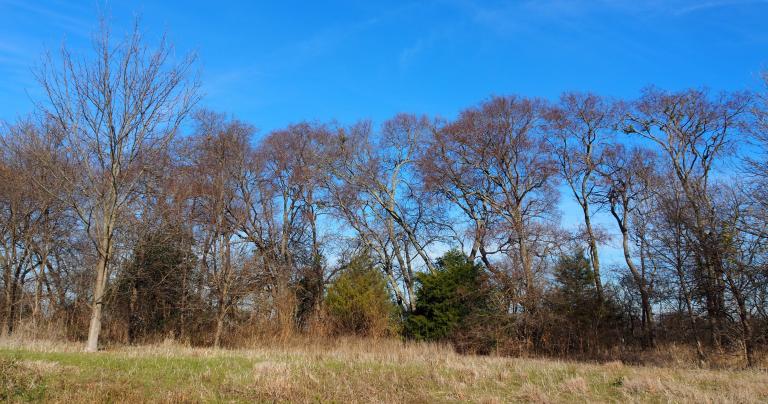I closed the last post with the line “keep working to develop the True Sight.” That, of course, raises the question “how do you do that?”
First, some definitions.
Second sight is the ability to see the future, Otherworldly beings, and the like. The general consensus is that either you’re born with it or you aren’t. There are several spells to give you the second sight, but that’s not what this post is about.
First sight is how author Terry Pratchett described the ability to see what’s really there, no matter what other people tell you. I was born with a very strong first sight, which has allowed me to grow my second sight.
But in the last post I suggested that maybe it’s wrong to separate perception into second sight and first sight. Maybe they’re the same thing and there’s just “true sight.” And true sight can be grown and developed.
What follows is not UPG. This is not revealed wisdom. It’s what I’ve done, and therefore what I can teach.
1. Kindle a passion for finding the truth
This is where it starts, and there is no skipping or shortcutting this step. Unless knowing what’s really real is passionately important to you, you will never do all the hard work it takes to develop the true sight.
Sometimes the truth is arcane, deep, and magical. Other times it’s ordinary and plain to see. Sometimes knowing the truth is comforting – other times it’s terrifying. Many times learning the truth about one thing reveals several more things you don’t know, at least not yet.
And none of that can be as important as finding the truth, no matter what it tells you or where it leads.
2. Get comfortable saying “I was wrong”
If you’re going to develop true sight, you have to accept that what you see today may not be what you thought you saw yesterday, or the day before, or for all your life.
This is very hard for most people. When presented with hard evidence that their beliefs are wrong, most people will double down on them and attack the messenger.
This is why kindling a passion for the truth is so important. You have to value being right, now, more than you value having always been right. Or as usually happens, pretending you were always right.
It’s OK to have been wrong – that’s part of being human. It’s not OK to remain wrong once you know better.
3. Question everything
If you would have the true sight you must question everything.
Take nothing at face value. Challenge authority and authority figures. Reject any answer that sounds even remotely like “we’ve always done it this way.” Tradition is a fine way to pass down rituals and other meaningful practices, and sometimes truth is coded in tradition. But tradition is no guarantee that something is factually true.
If there are people or books or rules you aren’t allowed to question, find another religion. In the words of psychonaut Terence McKenna, “if it’s real it can take the pressure.” Or in words often misattributed to Carl Sagan, “If it can be destroyed by the truth, it deserves to be destroyed by the truth.”
4. Demand to see for yourself
I’m not a trusting person. It’s not that I don’t think other people aren’t honest – most times they are. But people make mistakes. if I can see the evidence for myself, I can follow their observation and analysis step by step and I can be sure what they told me is accurate – or sometimes not.
Perhaps more importantly, I can learn their analytical methods and apply them in other situations in the future. Or when those methods lead to faulty conclusions, avoid them in the future.
This is often difficult when dealing with matters generally considered supernatural. Another person’s experience is subjective and momentary – there is no hard evidence for you to examine. If you want to see for yourself, you’re going to have to have your own experience, and that’s not something that can be produced on command.
But if you want to find the truth, that’s what you have to do. The true sight is something you develop for yourself, not something you can absorb from others.
5. Learn to separate data from interpretations
We all know that finding the truth requires separating facts from opinions. It’s harder to recognize that finding the truth requires separating raw facts from our thoughts about the facts.
It is a fact that you had a thought pop in your head seemingly from nowhere, telling you something you didn’t know and had no way of knowing. That a God or spirit gave you that thought is not a fact – it’s an interpretation of your experience. But it’s not the only possible interpretation. Maybe it was your future self passing something back in time. And maybe it was with you all along but you forgot that you ever even knew it. Or maybe it was something none of us have even considered.
Facts are real – interpretations require discernment.
6. Understand the role that foundational assumptions play
How many times have you heard a fundamentalist say “well, the Bible says…” as though that’s supposed to settle the argument. He assumes the Bible is a source of authority – the rest of us don’t.
How many times have you heard a materialist say “there is no way that could happen” – after you’ve just told him that it did happen, in great detail. He assumes there’s no such things as Gods or spirits or magic. The rest of us do… and have, for as long as we’ve been human.
Here’s the hard part – you have foundational assumptions too. We all have things we believe because we’ve always been told they were true, we want them to be true, or we need them to be true in order to understand our place in the universe. Most of them are unprovable, which is why we call them assumptions.
Spotting our own assumptions is very, very hard. I tried to help people spot theirs in my first on-line class – that went so badly I developed a whole new class to walk through the process of building a worldview. That class is wrapping up now, but it’s on-demand so you can take it any time, if you like.
Learning the true sight means understanding that no position is truly “objective” – we all have foundational assumptions. Know your own, and learn to recognize them in others.
7. Move beyond your cultural limitations
Similar to foundational assumptions, cultural limitations are the things you don’t know because you don’t know much about cultures other than your own. Some of them are grounded in imperialism – they seek to portray native and minority cultures as “primitive” to justify stealing their land and oppressing their people. Others are simply ordinary ignorance – you don’t know what you don’t know.
It is not the obligation of people in other cultures to teach you their traditions and lore – and they may have good reasons for not wanting to do so. But where they do, listen and learn and gain another perspective on the world and on the various spiritual beings who share it with us.
The challenge in examining other cultures is to figure out what are different takes on similar phenomena, and what are phenomena unique to that particular culture and/or geographic area. That’s a challenge, but it’s a challenge you can’t begin to address until you recognize that the culture you’re a part of is only one culture among many.
8. Get comfortable with complexity
A slight misquoting of early 20th century journalist H.L. Mencken says “for every complex problem there is an answer that is clear, simple, and wrong.”
Most lab experiments attempt to control all but one factor, to precisely measure the impact of that one variable on the results. Where it’s possible, this is a helpful approach. But our world is incredibly complex and incredibly interconnected. Pull on one thread and six others begin to unravel.
Evolution has programmed us for binary thinking. We don’t need to understand the intricacies of animal behavior to live – we just need to know which animals we can eat and which animals will eat us. Or poison us. Binary thinking is quick, and in the wild a quick judgement is the difference between life and death.
But if you want the truth, you’re going to have to accept that there are no simple answers, and the answers you find are going to raise even more questions.
9. Listen to your intuition
The old saying that we only use some tiny fraction of our brain’s capacity is false – we use it all. But our conscious mind can’t access it all, and it absolutely can’t process all the sensory inputs we receive. Nobody really knows how much our subconscious mind takes in, but it’s significant.
Your subconscious knows facts that your conscious mind ignores. It spots patterns you overlook. It makes a connection between cause and effect when empirical data analysis is overwhelmed.
Sometimes, anyway. Your subconscious can spot things your conscious mind ignores, but it can also confuse facts with hopes and fears. Intuition is a great place to start, but what it tells you still needs to be validated.
But if you want to develop the true sight, you’re going to need intuition as much as you need formal logic.



















